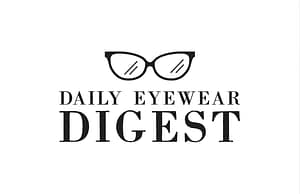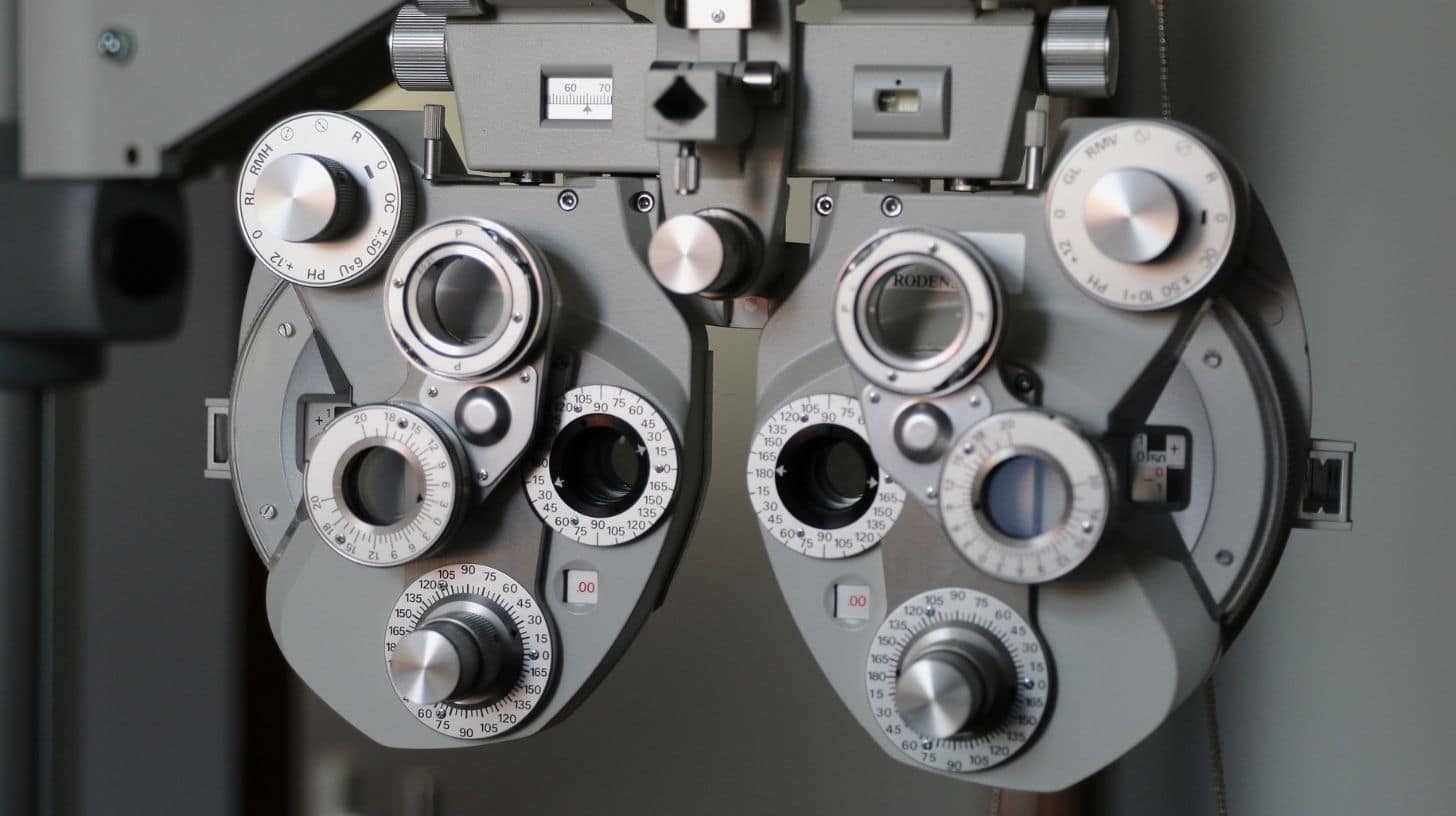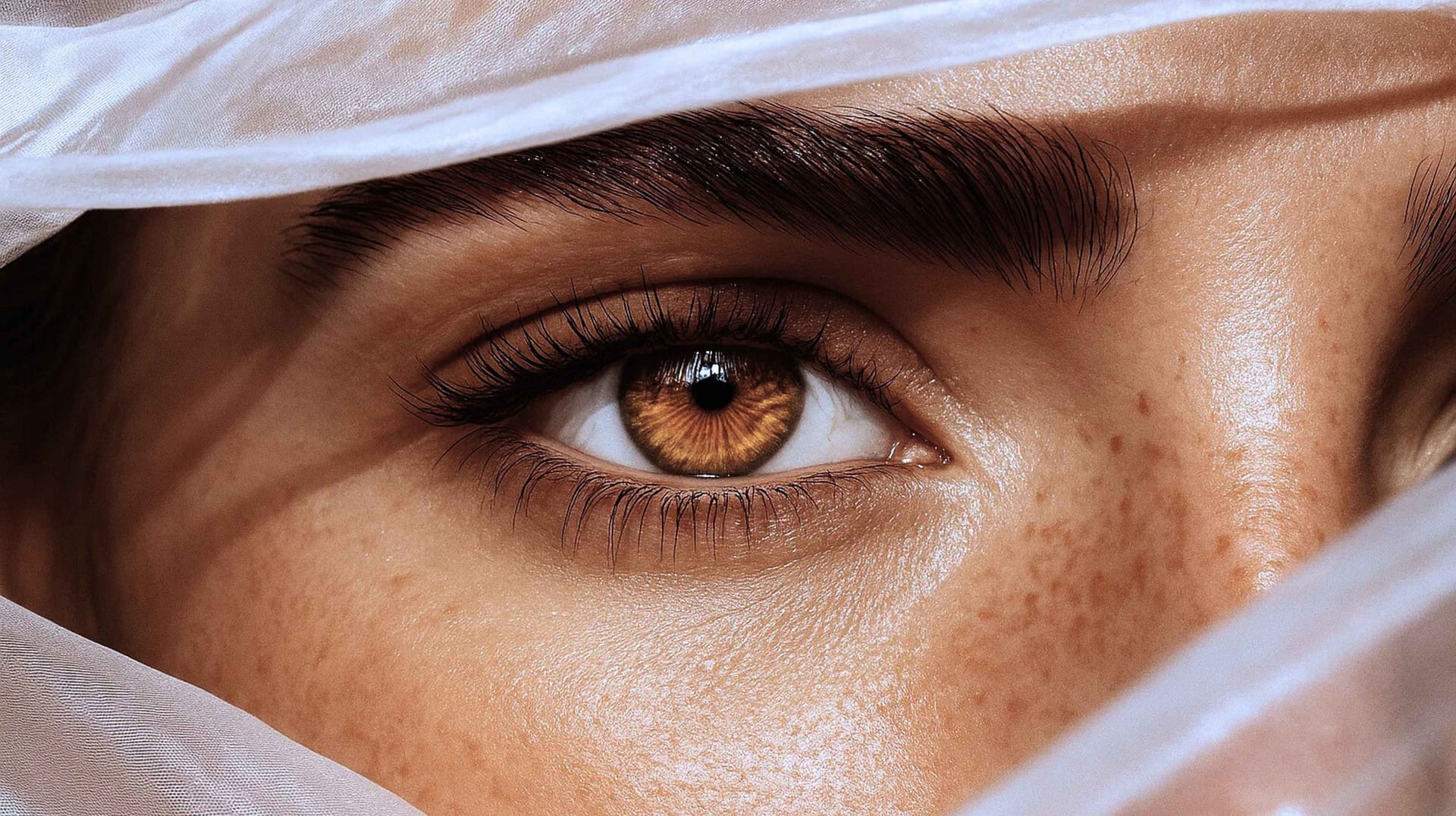Hitting our 40s often coincides with a new kind of daily exhaustion – screen-tired eyes. Many millennials in their late 30s and early 40s spend hours on computers, smartphones, and tablets for work and leisure. By mid-afternoon, eyes can feel dry, achy, or fatigued after endless emails and Zoom calls.
If you’ve noticed that your vision blurs or your eyes burn after a long day of screen time, you’re not alone. Digital eye strain, also known as computer vision syndrome, affects over half of people using digital devices today. This guide will help you understand why your eyes feel strained, what changes occur in your vision around age 40, and how to reduce digital eye fatigue while supporting your long-term eye health.
Importantly, this report takes a clinical and informative approach. We’ll explain concepts like macular pigment, oxidative stress, and antioxidant nutrition in plain language. You’ll learn practical steps – from the 20-20-20 rule to key nutrients – that can make a real difference for your eyes. We’ll also introduce ClearSight Eye Essentials – a supplement designed to support eye health – in a supportive way (without any overhyped claims).
Why Your Eyes Feel Strained After 40

Life in the digital age means our eyes are working harder than ever. It’s common for professionals to spend 6–10 hours a day or more looking at screens. This prolonged screen time can lead to digital eye strain – causing tired, sore eyes, blurred vision, and headaches. But for those around age 40 and above, there’s a double challenge: natural age-related changes in the eyes are beginning at the same time that screen use remains high. Here’s why this phase of life can be tough on your vision:
- Focusing gets harder in the 40s: Around our mid-40s, the eye’s lens becomes less flexible. This condition, known as presbyopia, makes it more difficult to focus on close objects (like reading small text on a phone). You might notice you have to hold your phone farther away or need reading glasses to see clearly. This change can make sustained screen reading more fatiguing, since your focus muscles are working overtime.
- Drier eyes and irritation: Tear production naturally decreases with age. On top of that, when we stare at screens, we tend to blink less frequently. Blinking spreads tears across the eye, so reduced blinking leads to dry, irritated eyes. It’s common for adults 40+ to experience dryness, burning, or a gritty feeling during or after screen use. Dry eye not only causes discomfort but can also blur your vision temporarily.
- Weaker eye muscles: Just like other muscles, the tiny muscles that help your eyes move and focus can get weaker with age. After years of intense use, these muscles may fatigue faster. In practical terms, this means long periods of reading or computer work might lead to more eye fatigue or difficulty maintaining focus than they did in your 20s or 30s.
- Increased light sensitivity: The aging process can cause pupils to become smaller and less responsive to changes in light. You might find night driving harder or that glare from a bright screen bothers you more than before. For 40-somethings who grew up with bright computer screens, this new light sensitivity can be frustrating and contribute to eye strain.
In short, millennials entering their 40s are often caught between two forces: heavy daily screen use and the onset of natural age-related vision changes. The result? Eyes that feel more tired and strained than ever. Understanding these factors is the first step toward relieving digital eye fatigue.
What Is Digital Eye Strain?

Digital Eye Strain (DES) – also called Computer Vision Syndrome – is a collection of eye and vision problems caused by prolonged use of digital screens. Think of all the times you’ve had sore, red, or tired eyes after a long workday on the computer, or a marathon scrolling session on your phone. Those symptoms fall under digital eye strain.
Common symptoms of digital eye strain include:
- Tired, sore or burning eyes: Your eyes may feel achy or as if they’re burning. Some people describe a gritty sensation, as if there’s sand in their eyes after too much screen time.
- Dryness or watering: You might experience dry eyes (from reduced blinking) or paradoxically watery eyes as your body tries to compensate for dryness.
- Blurred or double vision: After focusing at a screen for a long time, your vision might blur or you may have trouble refocusing on far objects. Text can become fuzzy.
- Headaches: Extended screen use often leads to tension headaches, especially around the eyes or temples. This is partly due to eye muscle fatigue and partly due to concentrating on screens without breaks.
- Neck and shoulder pain: Interestingly, eye strain can trigger posture changes – like leaning in or squinting – that result in neck or shoulder pain. So if you notice a stiff neck along with your eye fatigue, it could be related to your screen habits.
Digital eye strain sets in after roughly two or more continuous hours of screen use for most people. In our modern world, it’s not hard to hit that threshold daily: about 80% of American adults use digital devices for more than 2 hours per day, and many juggle multiple devices at once. The result is that an estimated 50–70% of computer users experience some symptoms of digital eye strain. If you’re working an office job or spending evenings on a tablet or phone, you’re likely familiar with these sensations.
What causes digital eye strain?
Several factors are at play:
- Prolonged focusing at a fixed distance: When you stare at a screen, your eye’s focusing (ciliary) muscle stays contracted. Doing this for hours is like holding a dumbbell curl without rest – the muscle gets tired. This constant near-focus fatigues your eyes.
- Infrequent blinking: We normally blink around 15–20 times a minute. But during screen work, blink rates can drop to half that or even less. Incomplete or infrequent blinking causes the tear film to evaporate, leading to dry, irritated eyes.
- Screen glare and brightness: Harsh light or glare from screens (or surrounding lighting) makes your eyes work harder to see contrast. An overly bright screen in a dark room, or reflections on your screen, can strain your eyes and contribute to headaches.
- Poor ergonomics: If your monitor or phone is at an awkward angle or distance, you might be straining your eyes and neck. For example, holding a phone very close, or having a computer monitor too high/low, forces your eyes into uncomfortable positions.
- Uncorrected vision issues: Subtle farsightedness or astigmatism can really exacerbate digital strain. If you need glasses or your prescription has changed, screens will be harder on your eyes. Even people with perfect distance vision may need reading glasses or computer glasses in their 40s due to presbyopia.
What about blue light? Blue light from screens is often discussed as a culprit for eye strain. We’ll explore this in the next section, but it’s worth noting here: according to the American Academy of Ophthalmology, blue light from computer screens is not the primary cause of digital eye strain symptoms. The discomfort is more related to the factors above – especially prolonged focus and dryness. However, blue light has other impacts on our eyes and health, which we will cover soon.
The good news is that digital eye strain is usually temporary. The symptoms typically improve after resting your eyes. But relief doesn’t mean we should ignore it – those daily bouts of strain signal that our eyes are under stress.
Over months and years, this constant stress, compounded with aging, can contribute to longer-term vision issues. In the next sections, we’ll discuss how specific aspects of screen use (like blue light) and natural aging (like oxidative stress) affect your eyes, and what you can do to protect your vision.
Blue Light, Macular Pigment, and Your Retina
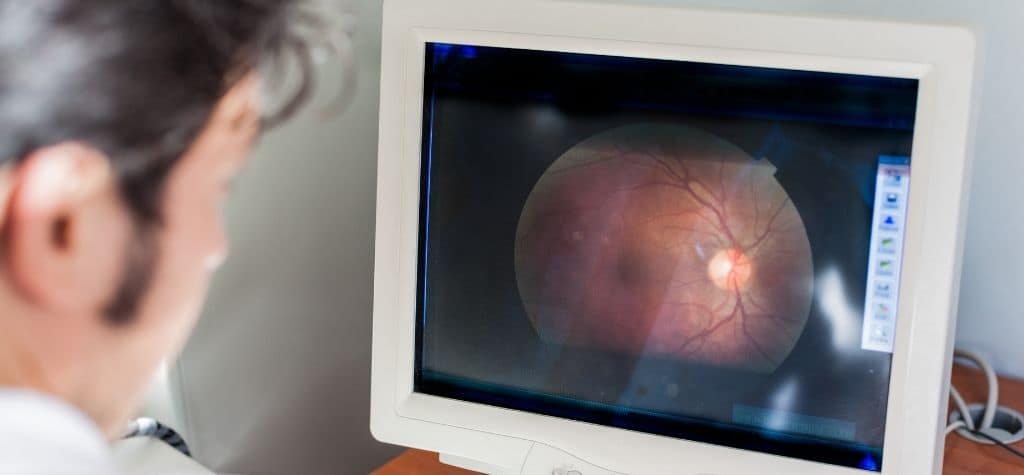
Modern screens – from smartphones to LED monitors – emit a high-energy, short-wavelength light commonly known as blue light. This is the same type of blue light that comes from sunlight (which is much more intense). Let’s break down why blue light matters for your eyes, and how your body has a natural defense called macular pigment.
What is blue light? It’s part of the visible light spectrum, with wavelengths of roughly 400–500 nm (nanometers). Blue light has more energy than warmer colors like yellow or red. Sunlight is our largest source of blue light, but device screens and energy-efficient lighting (LEDs, fluorescents) also emit significant blue light. Unlike UV light, which is mostly absorbed by the front of the eye, blue light penetrates all the way to the back of the eye, reaching the retina.
Blue light and eye strain: Blue light has a short wavelength that scatters more in the eye, which can create visual “noise” and reduce contrast. This may be one reason people feel it’s harder to read on screens – the eyes work a bit harder to focus through scattered blue light. Using night mode (warming the screen’s color) or blue-blocking glasses subjectively makes some users more comfortable. However, current research indicates that blue light from screens is not causing permanent eye damage or disease. The American Academy of Ophthalmology emphasizes that the amount of blue light from devices is not enough to harm your retina – it’s thousands of times less intense than sunlight. So why do we care about blue light at all? Two reasons:
- Visual comfort: Reducing blue light exposure in the evening can improve comfort and even help with sleep (since blue light can disrupt your sleep-wake cycle). Many find that using a blue-light filter or “night mode” on screens at night leads to less eye fatigue, even if the effect is subjective.
- Cumulative exposure: Over a lifetime, exposure to high-energy light (especially sunlight’s blue and UV light) can contribute to retinal damage and conditions like age-related macular degeneration (AMD). While your laptop isn’t going to blind you, it makes sense to be mindful of blue light as one piece of the overall light exposure puzzle – especially when it comes to protecting your eyes long-term.
This is where macular pigment comes in. The macula is the central part of your retina (the light-sensing tissue at the back of the eye). It’s responsible for sharp, detailed vision (what you use to read and recognize faces). The macula has a yellowish pigment made up of three nutrients: lutein, zeaxanthin, and meso-zeaxanthin. These are carotenoid antioxidants that we get from our diet (think green leafy vegetables and eggs). This macular pigment acts as a natural blue light filter and antioxidant in the eye. In other words, it’s like built-in sunglasses for your retina:
- The yellow pigment physically absorbs excess blue light, preventing some of it from reaching the sensitive retinal cells. Lutein and zeaxanthin are especially good at soaking up blue light.
- These nutrients also neutralize free radicals (more on those soon) generated by light exposure. They help protect the retina from oxidative damage.
Having a thick, robust macular pigment is generally a sign of a healthy retina. People with higher lutein/zeaxanthin levels tend to have higher macular pigment density, which has been associated with a lower risk of macular degeneration in some studies. Unfortunately, the body does not make lutein or zeaxanthin on its own – we must obtain them from foods or supplements. If your diet is low in these nutrients over time, your macular pigment may be thinner, potentially leaving your retina more vulnerable to light-induced damage or stress.
For a 40-something who has spent decades under the sun and now spends long hours at a computer, supporting your macular pigment is a smart move. It won’t give you superhero night vision or completely block all blue light, but it does enhance your eyes’ natural defense. In practical terms, eating lutein- and zeaxanthin-rich foods (or taking supplements) is like fortifying that internal blue-light shield.
Key takeaway: Blue light from screens can cause discomfort and might affect your sleep, but it’s not proven to cause eye disease by itself. Still, your eyes have evolved a defense in the form of macular pigment to handle blue light and oxidative stress. Ensuring you have enough of the nutrients that make up this pigment is important for long-term retinal health and comfort in the digital world.
Oxidative Stress: The Invisible Threat to Your Eyes
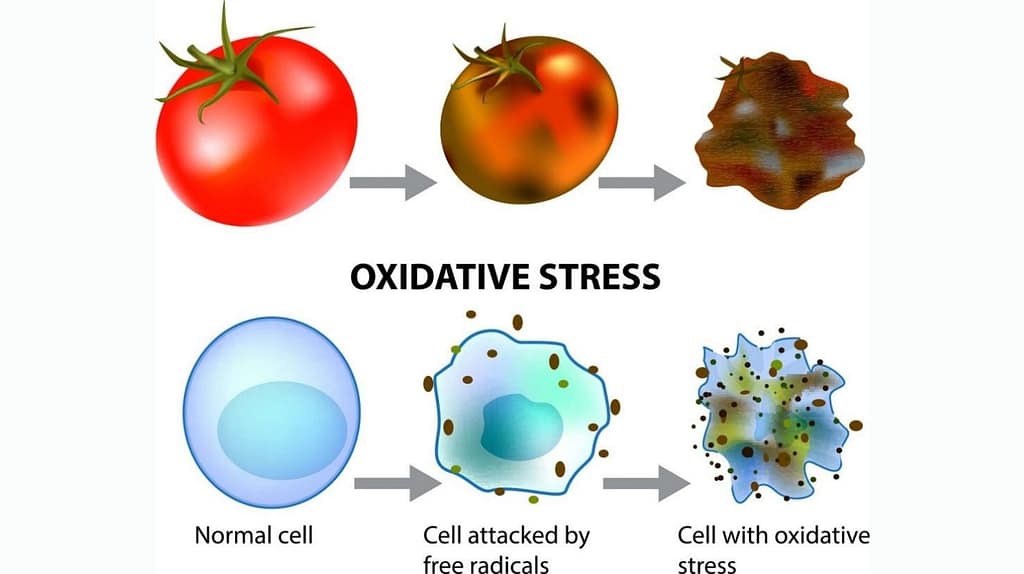
Every day, your eyes face an invisible threat: oxidative stress. It sounds like a buzzword, but oxidative stress simply means damage to cells caused by free radicals – unstable molecules that can harm cell structures. It’s often compared to “rust” inside the body. Just as oxygen causes iron to rust and degrade, free radicals can oxidize (damage) tissues in our bodies over time.
Why do our eyes have to worry about oxidative stress? The eye, especially the retina, is uniquely exposed to high levels of light and oxygen – the perfect recipe for generating free radicals. In fact, the eyes are particularly vulnerable to oxidative stress because of constant light exposure and the high metabolic activity of retinal cells.
Think about it: your retinas are working nonstop whenever you’re awake, converting light into signals for the brain. They consume a lot of energy (and oxygen) to do so. Add bright light exposure (from sunshine or screens) and you get more reactive oxygen species (free radicals) being formed in the eye.
Over time, if these free radicals accumulate or aren’t neutralized, they can start damaging important parts of the eye. For example:
- Retina and macula: Oxidative damage here is thought to be a major contributor to age-related macular degeneration (AMD). The macula’s light-sensing cells are very metabolically active and susceptible to “burnout” from chronic oxidative stress.
- Lens: The clear lens of the eye (which focuses light) can develop cataracts partly due to oxidative damage to its proteins. Decades of UV and oxidative stress gradually cloud the lens.
- Tear film and cornea: Free radicals on the eye’s surface (from UV light or pollution) can destabilize the tear film and irritate the cornea, contributing to dry eye and inflammation.
Our bodies aren’t defenseless against oxidative stress. We have a system of antioxidants – both enzymes and nutrient-derived – whose job is to neutralize free radicals. When you’re young, these defenses usually keep oxidative damage in check. But with age, and under high strain (like heavy screen use or intense sunlight exposure), the balance can tip. By your 40s and beyond, the cumulative exposure to light and environmental stressors means it’s critical to keep up your antioxidant defenses to protect your eyes’ delicate structures.
Here are a few factors that can increase oxidative stress in your eyes, especially relevant to the 40+ age group:
- Lifelong light exposure: Simply having seen a lot of light in your life (sunlight, welding without protection, even years of computer work) means more total photons hit your retina, and thus more opportunity for oxidative reactions. Long-term sunlight exposure, in particular, is linked to higher risk of cataracts and retinal damage.
- Screen use in low light: Using bright screens in dark settings (e.g., scrolling your phone in bed with lights off) floods the eye with light when your pupils are dilated, potentially increasing stress on retinal cells. It won’t blind you overnight, but it’s an added strain.
- Smoking and pollution: Toxins from cigarette smoke and air pollution generate free radicals that can travel through the bloodstream to the eyes. Smoking significantly increases oxidative stress in the eyes and is a top risk factor for macular degeneration.
- Normal aging: Unfortunately, aging itself reduces some of our natural antioxidant levels. The eyes of a 60-year-old have endured more oxidative hits and may have fewer reserves of protective compounds than those of a 20-year-old.
The bottom line is that oxidative stress is a silent, gradual process that underlies many age-related vision problems. You won’t feel oxidative stress day to day like you feel eye strain, but it’s happening in the background. Think of it as the slow wear-and-tear on the inside of your eyes. That’s why prevention and proactive care are so important. In the next section, we’ll discuss how antioxidant nutrition can bolster your eyes’ defenses against this invisible threat.
Antioxidant Nutrition for Healthy Vision

If oxidative stress is the rust slowly degrading your vision, then antioxidants are the rust-proof coating. Antioxidants are molecules that can neutralize free radicals, essentially disarming them before they wreak havoc on your cells. Our bodies produce some antioxidants naturally, but we also rely heavily on nutrients from our diet to protect our eyes. Let’s explore how proper nutrition can support your vision health, and what key vitamins and compounds you should be aware of.
Vitamins and minerals: Certain vitamins have well-known roles in eye health, especially:
- Vitamin A: Essential for vision, vitamin A (and its precursor beta-carotene) is a component of rhodopsin, the visual pigment in the retina. It also supports the cornea. Deficiency in vitamin A causes night blindness. You get vitamin A from foods like carrots, sweet potatoes, spinach, and liver.
- Vitamin C and Vitamin E: These are potent antioxidants that protect tissues throughout the body, including the eyes. The retina and lens have high concentrations of vitamins C and E. They help protect against oxidative stress in the eye. Vitamin C is found in citrus fruits, berries, and peppers; vitamin E in nuts, seeds, and oils.
- Zinc and Copper: The minerals zinc and copper are part of antioxidant enzyme systems. Zinc, in particular, is concentrated in the retina and helps vitamin A work in the eye. Oysters, beef, and beans provide zinc. (Copper is included with zinc in eye supplements to prevent copper deficiency when taking high-dose zinc).
In a landmark study called AREDS (Age-Related Eye Disease Study), researchers found that a combination of high-dose vitamins C and E, beta-carotene, zinc, and copper slowed the progression of macular degeneration in high-risk individuals. This finding led to the development of the “AREDS2” formula (which substituted lutein/zeaxanthin for beta-carotene) now commonly found in eye health supplements. While AREDS formulas are targeted at those with diagnosed eye diseases, the research underscores the importance of antioxidant nutrition in maintaining retinal health.
Carotenoids (Lutein, Zeaxanthin, and others): We met lutein and zeaxanthin earlier as the components of macular pigment. These carotenoids are powerful antioxidants as well as blue light filters. Studies suggest that higher intake of lutein and zeaxanthin is linked to lower rates of AMD and cataracts. Besides protecting the macula, they may also improve visual performance (some research hints that people with high macular pigment have better contrast sensitivity and recover faster from glare). You can increase lutein/zeaxanthin through diet – they’re abundant in dark leafy greens (like kale, spinach), peas, broccoli, and eggs. Because these are fat-soluble nutrients, eating them with a bit of healthy fat (olive oil on your salad, for example) helps absorption.
Another carotenoid to mention is astaxanthin – a red pigment found in algae and seafood (like salmon). Astaxanthin is a potent antioxidant that research indicates can cross into eye tissues. Some preliminary studies suggest it might help with eye fatigue and blood flow. While not as established as lutein/zeaxanthin, astaxanthin is an emerging “eye nutrient” you might see in supplements for digital eye strain.
Omega-3 fatty acids: Foods rich in omega-3s (like DHA and EPA) – such as salmon, tuna, and walnuts – are excellent for eye health. Omega-3s are a major component of cell membranes in the retina. They also support the oily layer of our tear film, aiding with dry eye issues. In fact, omega-3 supplements have been shown to improve symptoms of dry eye in some individuals. Including omega-3 sources in your diet can support retinal health and comfortable vision.
Dietary recommendations: In practical terms, a diet for long-term eye health looks like a heart-healthy diet: plenty of colorful vegetables and fruits, leafy greens daily, fish a couple of times a week, nuts and seeds, and whole grains. The same foods that are good for your heart and brain tend to be good for your eyes, too. That’s no surprise, since eye health is connected to overall cardiovascular health (the tiny blood vessels in the retina need good blood flow).
Try to incorporate these often:
- Leafy greens (spinach, kale, collards): Loaded with lutein and zeaxanthin – aim for a cup or two daily (raw or cooked).
- Bright fruits and veggies: Orange, yellow, and red produce (carrots, sweet potatoes, pumpkin, bell peppers, oranges, berries) provide vitamin C, beta-carotene, and other antioxidants.
- Fatty fish or flaxseeds/chia: For omega-3s. If you don’t eat fish, consider an algae-based omega-3 supplement.
- Eggs: Egg yolks have a highly bioavailable form of lutein and zeaxanthin. They also provide vitamin A.
- Nuts and seeds: Almonds, sunflower seeds, and hazelnuts are rich in vitamin E; peanuts and legumes provide zinc.
While a balanced diet is the foundation, some people choose to add a specialized eye health supplement to ensure they get optimal levels of these nutrients daily – especially if their diet isn’t perfect.
For example, ClearSight Eye Essentials is a supplement formulated to support long-term vision health. In one convenient daily regimen, it provides a blend of lutein and zeaxanthin (to rebuild macular pigment density), bilberry extract (rich in anthocyanin antioxidants that support healthy blood flow in the retina), and vitamins A, C, and E (to bolster the eye’s antioxidant defenses and even support tear production). By taking a supplement like this, you’re essentially giving your eyes extra nutritional insurance – feeding them the compounds that are often hard to get in sufficient amounts from food alone. (Note: Always check with your healthcare provider before starting any new supplement, especially if you have health conditions.)
Keep in mind that no supplement is a magic cure. We use terms like “support” or “help maintain” for a reason – these nutrients work gradually and preventatively. You might not feel a difference in a week. But over the months and years, ensuring your eyes have plenty of antioxidant and nutritional support can pay off in terms of comfort and possibly a lower risk of serious eye conditions. Think of it as part of your long-term self-care for your vision.
Everyday Habits to Reduce Digital Eye Fatigue
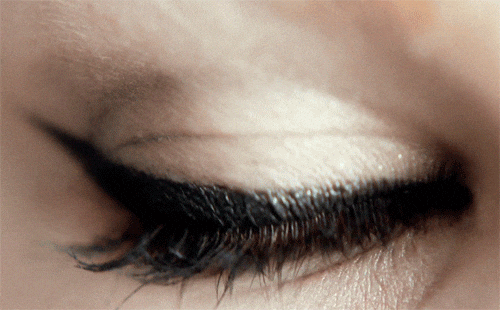
Armed with the knowledge of what causes screen-related eye strain, let’s focus on actionable steps you can take today to relieve your eyes. Small habit changes can make a remarkable difference in how your eyes feel by the end of the day. Here are some proven strategies and best practices for minimizing digital eye fatigue:
- Follow the 20-20-20 Rule: This is the golden rule of screen use recommended by optometrists. Every 20 minutes, take a break for at least 20 seconds to look at something 20 feet away. For example, glance out a window or down a hallway. This quick break relaxes your focusing muscles (like stretching a cramped limb) and gives you a moment to blink and re-wet your eyes. Set a timer or use a reminder app if you have trouble remembering. It’s amazing how a simple 20-second pause every few minutes can reduce that end-of-day strain.
- Blink often and hydrate your eyes: Make a conscious effort to blink fully and frequently when using screens. If your eyes feel dry, keep artificial tear drops handy and use them as needed for lubrication. Some eye doctors suggest a “blink exercise” – every 20 minutes, blink 10 times slowly, fully closing your eyelids each time. Blinking helps spread the tear film evenly and prevents the surface of your eye from drying out. In dry environments (air-conditioned offices or heated homes in winter), consider using a humidifier to add moisture to the air. And of course, staying well-hydrated by drinking water throughout the day benefits your eyes too.
- Optimize your screen and lighting: Adjust your display settings for comfort. Make sure the brightness of your screen is similar to the ambient light of your room – not glaringly brighter or too dim. Use text size and contrast settings that are easy on your eyes; don’t strain to read tiny font. Black text on a white (or soft gray) background is usually easiest to read. If you find high-contrast white screens too harsh, try using “dark mode” (white text on black background) in low-light conditions. Also, minimize glare: position your screen to avoid reflections from windows or overhead lighting. You can attach an anti-glare filter to your monitor if needed, and if you wear glasses, ensure they have anti-reflective coating to cut down on glare.
- Reduce blue light in the evenings: While blue light may not be the main cause of eye strain, it can affect comfort and circadian rhythm. In the evening hours, consider using your device’s night mode or a blue light filtering setting, which tints the screen to warmer tones. This can reduce potential strain and help your brain wind down for sleep. Some people also choose to wear blue-light blocking glasses at night if they have to do a lot of screen work before bed. The evidence on blue blockers is mixed, but if it subjectively helps you, there’s no harm. Just remember, for daytime screen strain, blue light reduction is less important than taking breaks and managing glare/brightness.
- Maintain an ergonomic setup: How you physically set up your workstation can either strain or ease your eyes (and neck and back). Follow these tips:
- Position your computer screen about 20 to 24 inches (about an arm’s length) from your eyes. The top of the screen should be roughly at eye level or slightly below, so you gaze slightly downward at the screen. This angle helps keep more of your eye surface covered by your eyelid when you look down, which can reduce dryness.
- Use a comfortable, adjustable chair to ensure you’re not craning your neck or hunching. Your feet should rest flat on the floor. A poorly positioned screen can lead to leaning in (eye strain + neck strain) or tilting your head.
- If you have documents to read while typing, use a document holder next to your screen rather than looking down and up repeatedly.
- Consider computer glasses if appropriate: these are prescription glasses optimized for the intermediate distance of computer use (if you already wear bifocals or reading glasses, ask your eye doctor if a separate pair for computer distance would help). Even without a prescription, glasses with an anti-reflective coating can reduce glare and increase comfort.
- Adjust your environment: The goal is to create a screen-friendly environment:
- Lighting: Soft, even lighting is best. Avoid having a bright window right behind your screen or directly in your view. If possible, position your screen perpendicular to windows. Use blinds or curtains to control natural light. For room lighting, “soft white” LED bulbs can be easier on the eyes than very cool “daylight” bulbs. A desk lamp with adjustable brightness can help illuminate your workspace without causing screen glare.
- Take real breaks: Beyond the brief 20-20-20 micro-breaks, remember to take longer breaks too. Every hour or so, stand up, stretch your body, and give your eyes a few minutes’ rest from any close focusing. Maybe take a quick walk or at least look out a window and let your mind (and eyes) wander.
- Limit marathon sessions: Whenever possible, break up your screen-intensive tasks. If you have a report to write that will take 3 hours, try to segment it with short non-screen tasks in between. Even a 5-minute non-screen activity (like making a cup of tea or doing some quick desk exercises) can reset your eyes.
Implementing these habits can significantly cut down on daily eye discomfort. Try adopting one or two changes at a time – for example, start with the 20-20-20 rule this week and see how your eyes feel. Next week, you might adjust your monitor position and lighting. Over time, these small adjustments add up to a big improvement in how fresh your eyes feel at 5 PM.
Protecting Your Vision for the Long Run
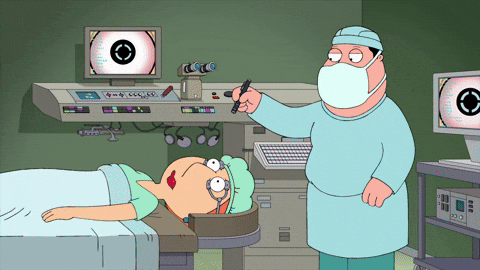
Reducing daily eye strain is crucial, but equally important is looking at the bigger picture of your long-term eye health. As we age, the risk of chronic eye conditions (like glaucoma, cataracts, and macular degeneration) increases. While not all are preventable, a proactive approach to eye care can stack the odds in your favor and help preserve your vision for years to come. Here are key long-term vision health strategies, especially relevant for those of us in the 40+ club:
- Get regular eye exams: Even if you have perfect vision or only mild glasses, don’t skip your routine eye exams. In your 40s, you should have comprehensive eye exams at least every 2–3 years (or as advised by your eye doctor). By your 60s, that increases to every 1–2 years. Regular exams can catch silent problems like glaucoma early, monitor for lens changes (cataracts), and ensure your prescription is up to date. Early detection is key – many serious eye diseases can be managed or treated to prevent vision loss if caught early. If you experience sudden changes (like a burst of floaters, flashes of light, or sudden vision loss), see an eye doctor right away.
- Protect your eyes from UV light: We talked about blue light from screens, but ultraviolet (UV) light from the sun is a proven enemy of the eyes. Cumulative UV exposure contributes to cataracts and macular degeneration. Make it a habit to wear sunglasses that block 100% UVA and UVB whenever you’re outdoors in daylight, even on cloudy days. Wrap-around styles or larger lenses are best to cover more of the eye area. A wide-brimmed hat can add extra protection by blocking overhead sun. Think of sunglasses not just as a fashion accessory but as essential eye protection – like sunscreen for your eyes.
- Manage your overall health: The health of your eyes is closely linked to your general health. Conditions like diabetes, high blood pressure, and high cholesterol can damage the small blood vessels in the retina if uncontrolled. For instance, diabetes can lead to diabetic retinopathy, a leading cause of vision loss. Hypertension can contribute to retinal vascular issues. Keep these conditions well-managed with the help of your healthcare provider, and ensure you get regular screenings. What’s good for your heart (staying active, eating healthy, not smoking) is often good for your eyes. On that note:
- Don’t smoke, or quit if you do: Smoking dramatically increases the risk of macular degeneration, cataracts, and optic nerve damage. It accelerates oxidative stress in the eyes and reduces blood flow. If you’re a smoker, know that quitting is one of the best investments in your vision’s future. It’s never too late to stop; the risk of eye disease drops after quitting and continues to improve over time.
- Stay physically active: Regular exercise improves circulation, including blood flow to the optic nerve and retina. Exercise has been shown to lower intraocular pressure (beneficial for glaucoma risk) and improve overall vascular health. You don’t have to run marathons – even daily walks, cycling, or yoga can help keep your eyes healthy by keeping your body healthy.
- Give your eyes a rest, even in leisure: After a workday on the computer, you might relax by watching TV or scrolling on your phone – more screen time! Try to balance screen leisure with non-screen activities when you can. Read a physical book, spend time outdoors, or take up a hobby that gives your eyes a break from focusing up close (gardening, walking, crafts, etc.). This can reduce chronic strain and also contributes to overall well-being.
- Maintain a healthy diet and weight: We covered nutrition in depth already, but to reiterate – a diet rich in antioxidants and omega-3s, and maintaining a healthy weight, will help protect your eyes. Obesity is a risk factor for diabetes and other conditions that can harm eyes. Plus, eating well ensures your eyes have the nutrients they need to repair and defend themselves daily.
By adopting these long-term habits, you’re creating a supportive environment for your vision to thrive. It’s all about being kind to your eyes: give them the fuel they need (nutrients, oxygen via exercise), the protection they need (sunglasses, good health management), and the rest they need (sleep and breaks). Your eyes have served you well all these years – a little care and foresight will help ensure they continue to do so as you move into your 50s, 60s, and beyond.
